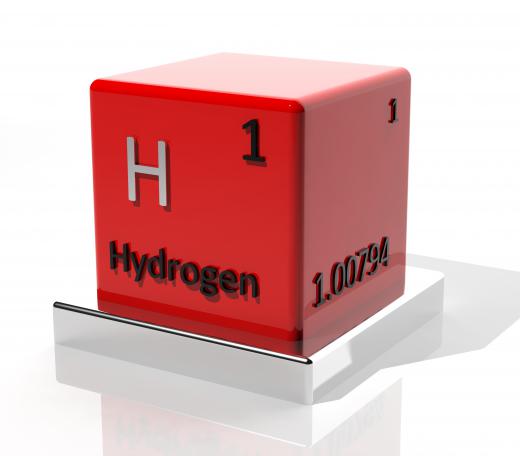Transfer hydrogenation refers to the treatment of an element or compound with hydrogen from a source other than gaseous hydrogen. A chemical reaction occurs between the substance to be modified and molecular hydrogen in the presence of catalysts, which facilitate the reaction. This process is often used in the industrial treatment of organic, carbon based, compounds. For example, coal liquefaction involves the large-scale use of transfer hydrogenation to produce synthetic fuels from coal.
The chemical reaction essentially involves adding pairs of hydrogen atoms to the material being treated. In transfer hydrogenation, this is accomplished using donor solvents as the hydrogen source. Common donor solvents include formic acid and isopropyl alcohol, though some are synthesized for use in a particular transfer process. The reaction usually occurs in the presence of a metallic catalyst, which reduces the minimum energy needed to start the reaction.

Transfer hydrogenation is particularly useful in organic synthesis, the production of carbon based compounds by means of organic reactions. Organometallic catalysts, based on the platinum group of metals, have been developed for use in this process. Isopropyl alcohol is often the donor solvent and becomes acetone after contributing its hydrogen. The catalysts themselves are unchanged by the reaction.
Organocatalytic transfer hydrogenation makes use of nonmetal catalysts. These are formed from elements common to organic compounds, such as carbon, sulfur and hydrogen. The development of these catalysts allows the transfer process to be applied to a wider range of chemicals. Most commonly used metallic catalysts are ineffective for the hydrogenation of organic groups such as the benzene series. This chemical class plays an important role in the production of pharmaceuticals, plastics and dyes.
Hydrogenation using non-gaseous donors has long been a standard laboratory procedure. Research into the transfer hydrogenation process itself has been motivated by its significance to the pharmaceutical and petrochemical industries. The development of hydrogen donors and catalysts for use with substances not suitable for traditional transfer processing is an area of interest. Research into catalysts based on common metals, such as nickel, instead of platinum and other rare metals seeks to make the industrial process more cost effective.
The use of a non-gaseous hydrogen donor has several advantages when implemented on a large scale. Typically, standard industrial equipment can be used in the transfer process, rather than the pressurized equipment necessary when using a gas. Hydrogen gas is also extremely flammable and requires great care in storage and handling. These considerations make the use of hydrogen in gas form a much more expensive endeavor than using non-gaseous hydrogen donors.
